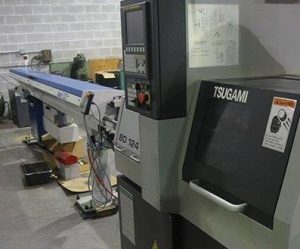Crafting CNC Turning Milling Parts
Introduction
CNC turning and milling are essential machining processes used to create a wide variety of precision parts across industries. Understanding how CNC turning milling parts are crafted provides insight into the intricacies of modern manufacturing processes.

Material Selection
The process begins with material selection, where the appropriate material is chosen based on the desired properties and specifications of the final part. Common materials used for CNC turning milling parts include aluminum, stainless steel, brass, titanium, and various engineering plastics. The choice of material depends on factors such as strength, durability, corrosion resistance, and thermal conductivity.
Programming and Setup
Once the material is selected, the CAD (Computer-Aided Design) model of the part is translated into CNC (Computer Numerical Control) programming instructions. This programming guides the CNC machine in performing the necessary operations to create the desired geometry. Before machining begins, the CNC machine is set up with the appropriate cutting tools, workholding fixtures, and tool offsets to ensure accuracy and repeatability.
CNC Turning Process
In CNC turning, the workpiece is mounted on a spindle that rotates at high speeds. A cutting tool, typically a single-point tool or insert, is brought into contact with the rotating workpiece to remove material and create the desired shape. The cutting tool moves along the length of the workpiece, cutting away excess material until the desired dimensions and surface finish are achieved. CNC turning is ideal for producing cylindrical or conical shapes with rotational symmetry.
CNC Milling Process
In CNC milling, the workpiece is securely clamped to the machine table or fixture, and the cutting tool(s) are mounted on a spindle that moves along multiple axes. The cutting tool(s) remove material from the workpiece surface in a variety of directions to create complex shapes, features, and contours. CNC milling machines can perform a wide range of operations, including face milling, slotting, drilling, contouring, and pocketing.
Quality Control and Inspection
Throughout the machining process, quality control measures are implemented to ensure the dimensional accuracy and surface finish of the CNC turning milling parts. This may involve in-process inspections using precision measuring instruments such as calipers, micrometers, and CMMs (Coordinate Measuring Machines). Any deviations from the specified tolerances are corrected promptly to maintain part quality and integrity.
Conclusion
In conclusion, CNC turning milling parts are crafted through a systematic process that involves material selection, CNC programming, setup, machining, and quality control. By leveraging advanced CNC technology and precision machining techniques, manufacturers can produce high-quality parts with tight tolerances and intricate geometries. For reliable CNC turning milling parts tailored to your specifications, consider partnering with a trusted provider like cnc turning milling parts, delivering precision machining solutions for diverse industries.